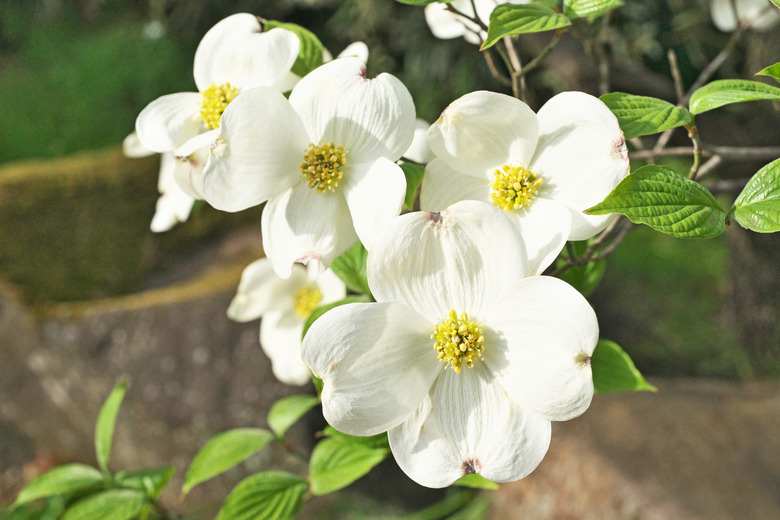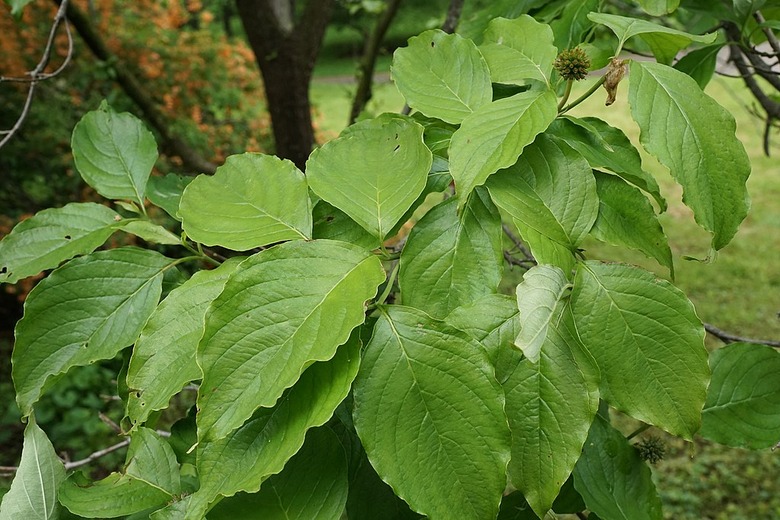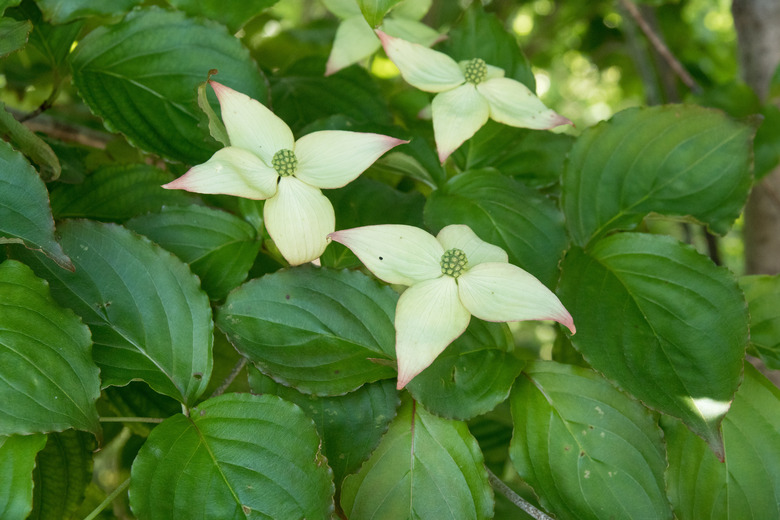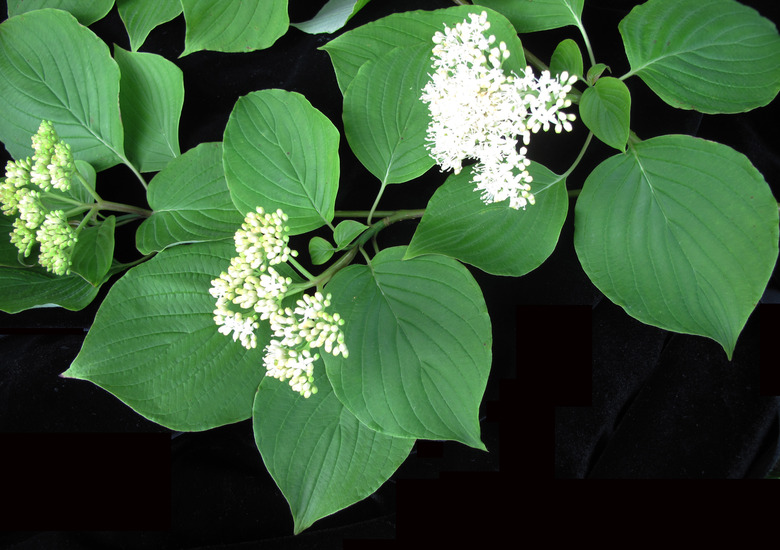Dogwood Tree Leaf Identification
Dogwoods (Cornus spp.) are a genus of deciduous trees most often grown for their flowers, which in the most popular dogwood species are not real flowers, but rather modified leaves called bracts.
**Analyzing the shape, color and hairs (or lack thereof) of a dogwood leaf, as well as the arrangement of the leaves on the stem, can help you identify the species of tree.**
Opposite vs. Alternate Leaves
All but one species of dogwood trees have what are referred to as opposite leaves, which means that two leaves are attached to a single node, on opposite sides of the stem.
In one species of dogwood, however, the leaves are alternate. This means that there is only one leaf attached to a node and that the leaves alternate on opposite sides, running the length of the stem.
Tip
The majority of dogwood tree species have opposite leaves.
Distinguishing Features of Dogwood Tree Leaves
Let's go over the distinguishing leaf features of some of the most common species of dogwood tree.
It is worth noting that the vein pattern in virtually all dogwood leaves is pinnate, which means that there is a central vein with secondary veins extending out from it, resembling a ladder. The veins in dogwood leaves curve toward the tip of the leaf.
Flowering Dogwood
The most popular species of dogwood is the flowering dogwood (Cornus florida, zones 5 to 9) which, like the majority of dogwood trees, has opposite leaves.
The leaves of this species have six or seven pairs of veins. The veins on the undersides of the leaves are covered in hairs.
The margins of the flowering dogwood leaf may be smooth or have a slight wavy appearance. The foliage of the flowering dogwood tree is a dull dark green and turns red in the fall.
Kousa Dogwood
The Kousa dogwood (Cornus kousa, zones 5 to 8), also known as the Chinese dogwood, has shiny, dark green leaves with lengths of about 4 inches. The underside of Kousa dogwood leaves are a paler color. The leaves are opposite.
The leaves have an oval shape and come to a point. If you look at the base of the petiole—the stalk that connects leaves to the stem—of a Kousa dogwood leaf, you will notice golden brown hairs.
In autumn, the leaves of the Kousa dogwood turn red or purplish red.
Pagoda Dogwood
The pagoda dogwood (Cornus alternifolia, zones 3 to 7) is also known as the alternate leaf dogwood because it has alternate, rather than opposite, leaves. The leaves at the tip of the stem tend to be whorled, which means there are three or more leaves attached to a single node.
Tip
The pagoda dogwood is the only species in this genus that has alternate, rather than opposite, leaves.
The leaves of the pagoda dogwood are a medium green color on the upper surface, and pale green or white on the underside, which is covered in fine hairs. The leaves of this tree turn a reddish-purple color in the fall; however, some streaks of green and yellow usually remain visible.
Pagoda dogwood leaves are elliptical or oval-shaped and 3 to 5 inches in length.
References
- North Carolina State Extension: Cornus Florida
- North Carolina State Extension: Cornus Kousa
- North Carolina State Extension: Cornus Alternifolia
- Missouri Botanical Garden: Cornus florida
- Missouri Botanical Garden: Cornus alternifolia
- The University of Texas at Austin Biodiversity Center: Botany Basics: Understanding Leaves
- Clemson Cooperative Extension: Dogwood
- Missouri Botanical Garden: Cornus kousa
- Virginia Tech Dendrology: Virginia Tech Dendrology



